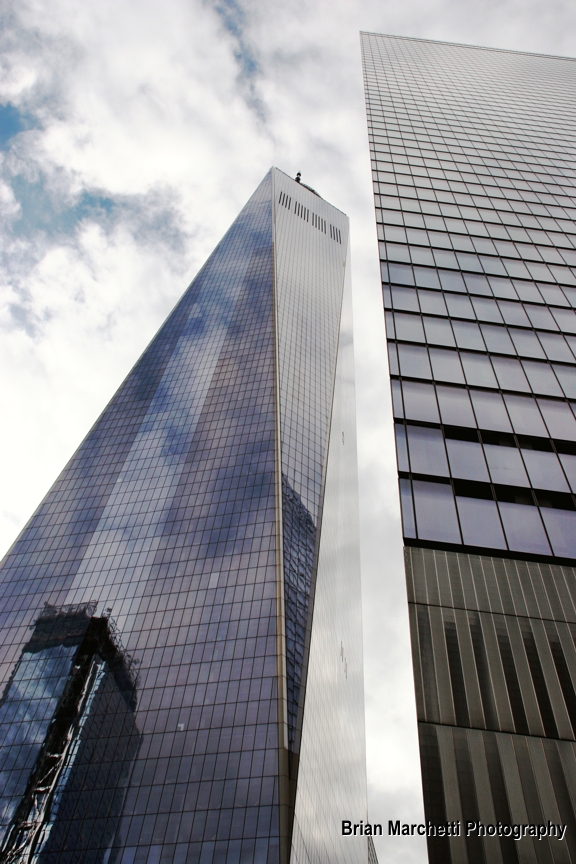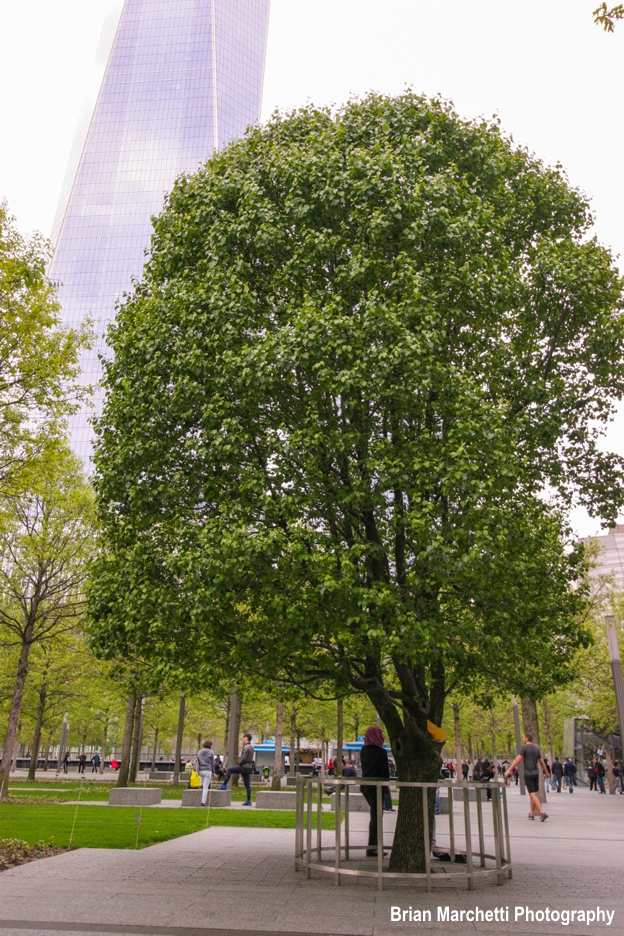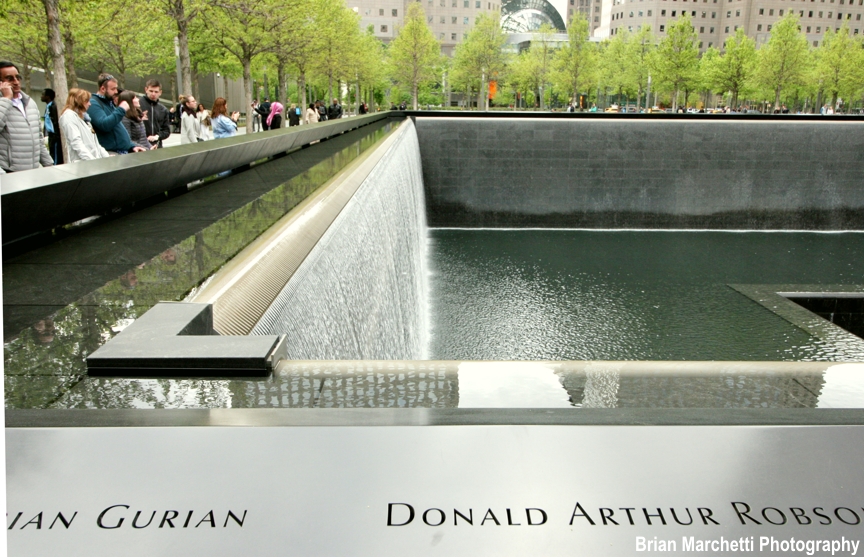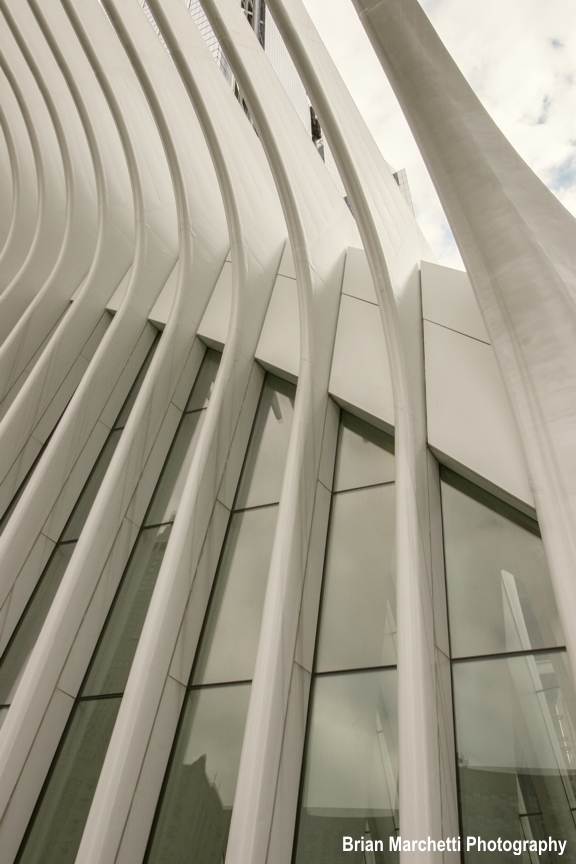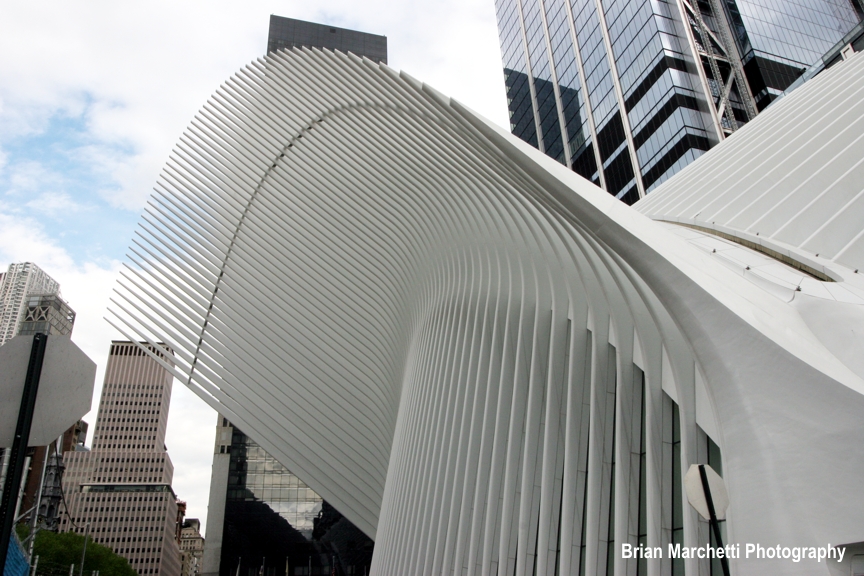The Return to the WTC
The last time I visited the World Trade Center site in Lower Manhattan in the post 9/11 era was 2006. Back then, the gigantic site still had major construction activity. This activity only ended in recent years with the completion of the World Trade Center 1 tower in 2013, the memorial and former building footprint pools also in 2013, the National September 11 Museum in 2016, the Transportation Hub also in 2016, and so many other elements and buildings now completed. The overall rebuilding plan is still not completed, but many of the new towers are appearing within the planned semi-circle at the periphery of the main site plaza.
In my 2006 visit, the plaza and memorial were not completed yet, and the site itself was not even yet built up to street level. It was a major construction site with chaos at its perimeter and a memorial to those who perished there, both at the same time. I did not forget about the sanctity of the site for a moment and took minimal pictures, only sneaking a few from my low-res camera phone (at the time). Taking the subway to the WTC site from mid-town, I imagined being on the last train that departed the site after the first tower was hit. It was an unavoidable thing, pondering so much about September 2001 and seeing the site in person for the first time since the 1980s.
So, in 2017, knowing that the plaza and memorial, transportation center, and museum elements were all completed, I knew visiting there would feel different. The material changes do not change the history of the site, however. I wanted to see the memorial pools at the former building footprints and the transportation center, and the new towers that have sprung up under the rebuilding plan, including Tower 1.
The new WTC 1 tower rises from the restored site, replicating the
heights of the top floor of the former two towers.
Approaching the site from the north, you come upon vehicle security checkpoints in the road, where drivers are prohibited from circulating around and through the WTC complex, unless on official business. That sets the tone first.
The street grid – a common consideration for old major block developments for urban planners (I am one by education, but I specialize professionally in transportation) is restored in the north-south direction by a pedestrian pathway on Greenwich Street. The old open and huge plaza of the original WTC is not there any more. The plaza is now covered by trees around the memorial pools and throughout, and the National September 11 Museum has prominence there as well. I could not get myself to go into the Museum.
One of the most touching things about the site is the Survivor Tree, which I had read about before my trip. The tree survived the 9/11 attacks somewhat intact, and was taken from the destroyed site to be nursed back to health by the City in an arboretum in Brooklyn’s Prospect Park. It is unlabeled, which makes its discovery within the Plaza more dramatic. An anonymously-placed flower bouquet was placed within its branches on the day I visited. The pain of those who placed the flowers I cannot begin to fathom adequately. The tree is a sign of life, a special marker, in the midst of the strife and painful history.
Unlabeled but not forgotten. The Survivor Tree, rescued from the site,
and nurtured and returned, has a special place in the plaza,
and is the most lush and alive of the site greenery.
The Plaza area is still a lovely place to walk, a very calming and serene place in the urban environment, but its more like a walk through a cemetery and not a park. The memorial fountains are very dramatic and eerily beautiful, and the water drops into the main pool with a beautiful soft but powerful noise. On the water’s final path it disappears into the center, and you cannot see the bottom due to the angle. Very dramatic and has a fitting metaphor.
The edges of the two pools are surrounded by brushed steel panels with the names of all those who perished on 9/11 in each Tower, cut into the metal. Many have placed flowers into the voids of the letters. You can run your fingers over the names, and when I did that I thought of each individual life and tears came to my eyes. An overwhelming, beautiful, and touching memorial. I wouldn’t have missed it on my trip, for the world.
The design concept adopted for the site reconstruction was called Reflecting Absence. As written as part of the design concept: “…a visitor to the site can sense that what is beyond this curtain of water and ribbon of names is inaccessible.” The feeling of loss is shown visually with this element. The pools are a great healing element on the site, although the scars will never heal completely.
The North Tower memorial pool. Seeing the water disappear
into the void, touching the names in cut steel,
seeing the flowers…truly overwhelming.
In my state of mind while walking through the site, I totally forgot that I wanted to see both the exterior and interior of the grand Transportation Center. I will definitely see the interior next time I am there.
The design was supposed to mimic a bird’s wings, with the building element taking flight from the site, if I recall correctly. The building spires are dramatic and striking, and how they merge with the windows and channel through them vertically definitely provides a reference to the architecture of the former towers. In Tower 1 and Tower 2, they formed arches at the top of each lobby, before ascending straight to the top of the buildings.
The outside wall of the Transportation Center, north side.
The spires between the windows mimic the vertical elements of
the former towers WTC 1 and WTC 2.
The new Transportation Center, inserted into the City fabric.
Serving an everyday utilitarian purpose, but pointing to the heavens with its wings…
Perhaps sheltering those who travel.
The rebirth of the site with the completion of major construction is very inspiring, and very much shows that life goes on even in the most dire of situations. The site had to be rebuilt to ensure the City and the World would be strong against the attacks, and support life again.
The site in Spring 2017 when I visited still had some active construction activities, including modified connections at the lobby level of WTC 1 and the rebuilding of a religious sanctuary at the south end of the Plaza. It is very walkable and accessible, and could be included on any walking itinerary of Downtown Manhattan, including nearby Wall Street, Little Italy to the northeast, the Battery to the south, etc.
The site can be reached via MTA rail lines 1, 2, 3, 4, 5, A , C, J, E, N, R, and W. PATH trains from New Jersey provide major service here as well. This is as of 2017. Check schedules for limited service times and other details.
Happy travels….and live life, but never forget history.
The Survivor Tree and the WTC 1 tower, reaching to 1,776 feet to the mast top.
The rebuilt scar on the surviving city.
Links:
Survivor Tree details:
https://www.911memorial.org/survivor-tree
Transportation Center details:
https://en.wikipedia.org/wiki/World_Trade_Center_station_(PATH)

